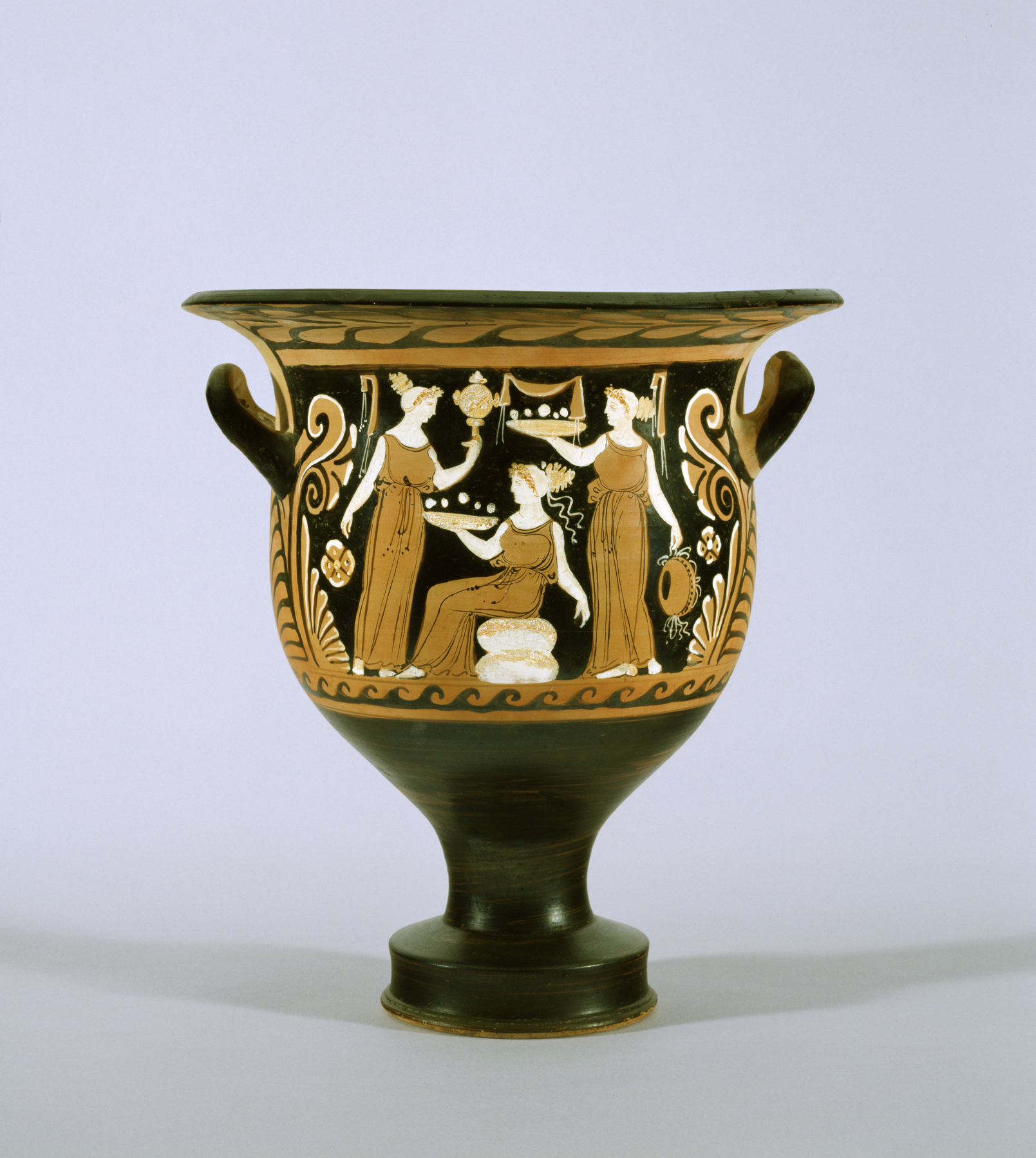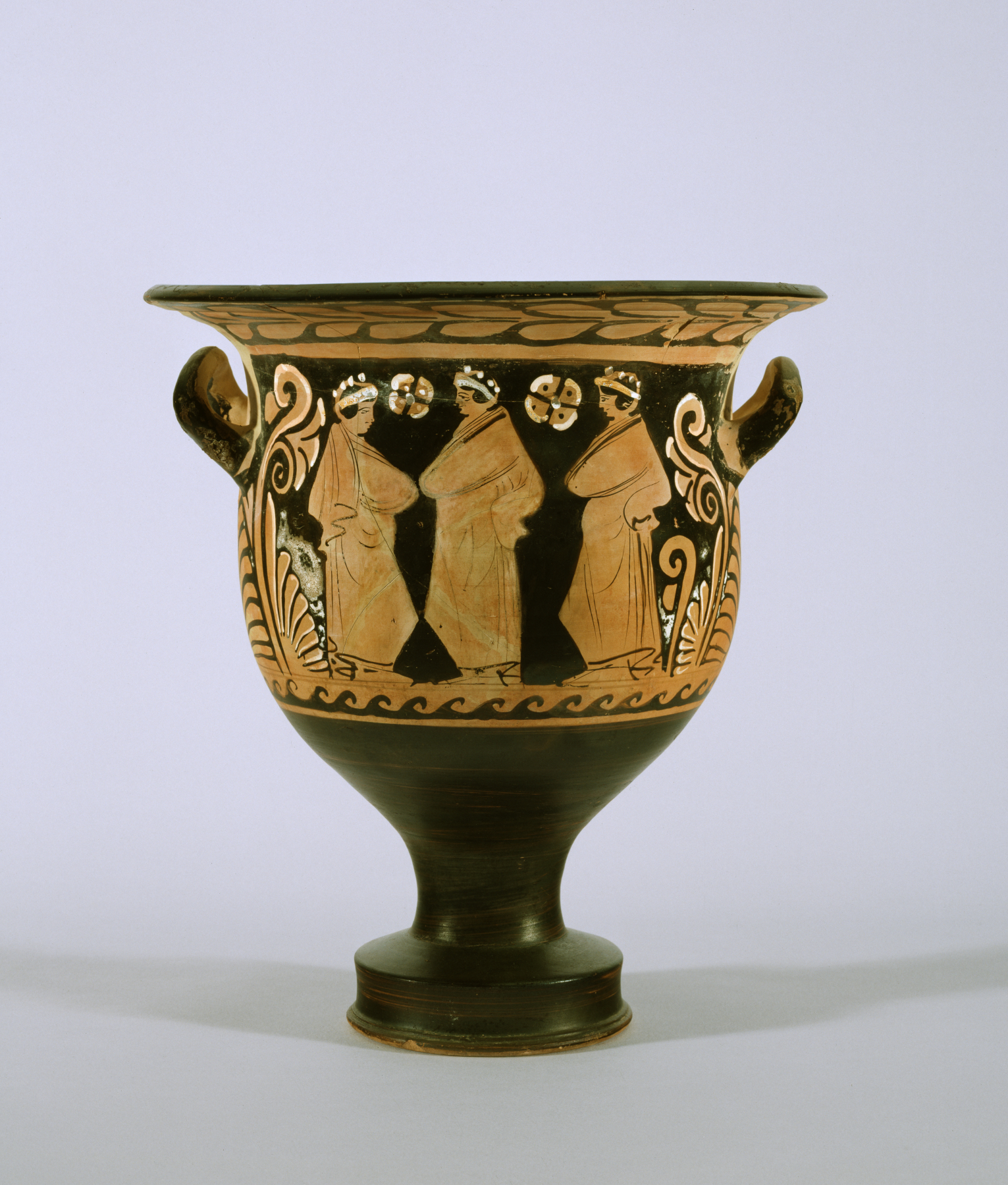Bell Krater with Three Women and Three Youths
(Ancient Greece )
Here, three women carry offerings, a mirror, and a tambourine in preparation for a ritual. This scene is much more carefully executed than the one on the opposite side, which shows three youths with mantles wrapped completely around their bodies. Groups of two or three youths often appear on the backs of theses vases, and these scenes are usually inferior to those on the front. Depictions of small groups of people holding various objects are common on vases attributed to this painter, who combines Apulian elements with Campanian features, like the use of white to represent female skin.
Provenance
Provenance (from the French provenir, 'to come from/forth') is the chronology of the ownership, custody, or location of a historical object. Learn more about provenance at the Walters.
Münzen und Medaillen A. G., Basel, Switzerland, 1983; Marilyn and Herbert Scher, Pikesville, MD, 1983, by purchase; Walters Art Museum, 2003, by gift.
Geographies
Italy, Campania (Place of Origin)
Measurements
15 5/8 x 14 3/4 in. (39.69 x 37.47 cm);
at lip: 14 3/4 in. (37.46 cm) (diam.)
Credit Line
Gift of Marilyn and Herbert Scher, 2003
Location in Museum
Accession Number
In libraries, galleries, museums, and archives, an accession number is a unique identifier assigned to each object in the collection.
In libraries, galleries, museums, and archives, an accession number is a unique identifier assigned to each object in the collection.
48.2761




